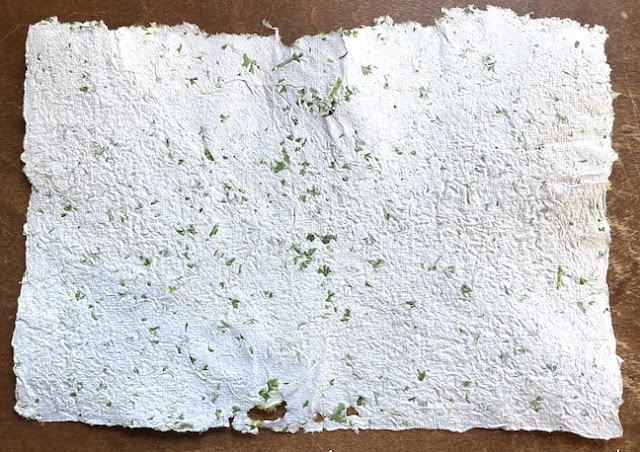What does a writer do with all those draft pages? That assumes you write on paper as I do.
I can but don't like writing first draft on the computer, because I can't stop rereading what I've written, second-guessing myself. I move forward more efficiently when I write first draft longhand. And although I can write with ballpoint or rollerball or pencil on newsprint, I have my precious routines about using a particular format of hard-cover notebook and my Lamy fountain pen, even though the Lamy leaks unless I use a certain ink (not Lamy).
For a writer, what's important aren't the tools but the words--except that I'm also a human animal who likes her creature comforts. I like the smoothness of ink and nib when I'm writing on good paper. I like the bound notebooks because I only write on one of the facing pages and keep the other free for notes and arrows.
After a couple of hours, I dictate what I've written into the computer. From then on, I print pages of hard copy that I revise--again, by hand. I revise a lot. When I hear people boast that they've done five revisions, I have no idea what they mean. That would be me getting started. I use a lot of paper, but too many hours of looking at a computer screen give me migraines, and too many hours of typing aggravate my hands. Paper is a luxury I allow myself. When it's filled with sentences and scribbles, I dutifully drop it in the recycling bin.And now R has begun making paper. A friend gave me a few sheets of paper she'd made and he was so pleased with the effect when he painted on it--how the paper took the paint, how the paint bled, how vividly the colours dried--that he decided to make some himself. He set up a table in the far corner of the cellar behind the water heater.
I have a dim memory of watching an artist years ago, cooking torn rags in a cauldron. Now it seems one speeds up the process of making pulp by buzzing it in a blender--and that the easiest way to get pulp is by using old paper.
Except R doesn't want to use old envelopes. He's asked for paper from my recycling bin. He wants story ideas. He says he's making "solidified narrative".
He's been adding different bits to the pulp for texture and colour. This one has parsley. It's the paper he used for the Pink Flamingos up top.
Why Pink Flamingos? No idea. That's his story. I had my chance when I wrote words on the paper.
Here he's adding dried Xmas cactus flowers...






Looks good!
ReplyDeleteThanks, Jack.
ReplyDeletefantastic. What artists you both are!
ReplyDeleteThanks, Matthew. Though technically, in this instance, he's doing more with my garbage than I was able to do myself.
DeleteThis is so neat!
ReplyDeleteThanks!
DeleteThese papers are beautiful, Alice. I remember once making paper with my children -- blender, old paper, including some newsprint, a bit of cloth, plants, etc. -- and I remember lines of a page from the TLS sort of coming out of the pulp and I thought at the time, wow, I could try to manipulate the texts I use for the pulp. But then somehow I ran out of time and never really took it on. In another life. In R's life? Interesting that he likes how the paper takes the paint. I find that when I'm dyeing with indigo, the pigment really penetrates the fibres of coarse linen in a way that I love. SO many things to learn and try.
ReplyDeleteHow fibres respond to pigment, yes, I can imagine that must feel really satisfying. As you say, so many things to learn and try.
Delete